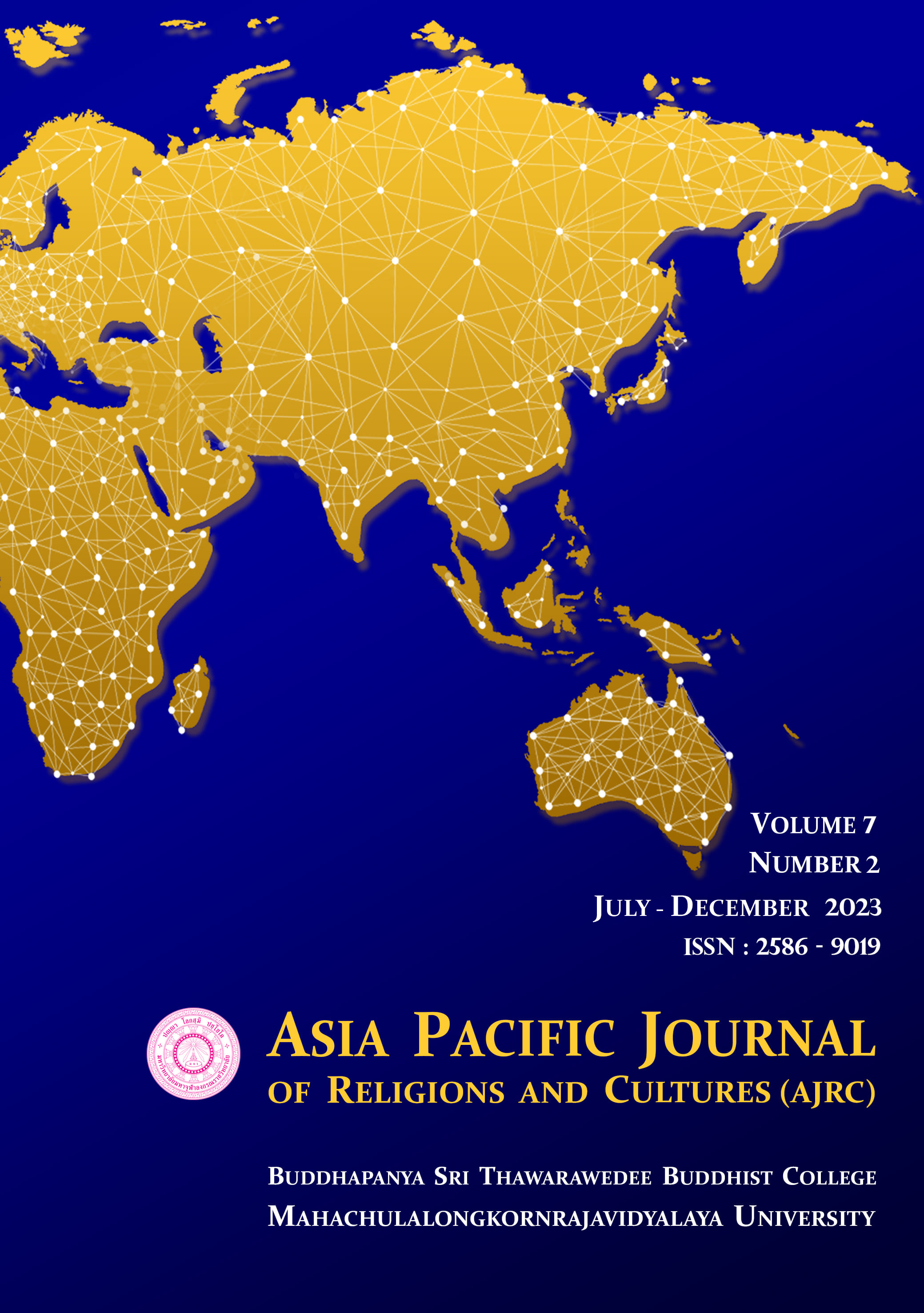AN INTRODUCTION TO LANGUAGE CONTACT WITH SOCIOLINGUISTICS AND CAUSES THE LANGUAGE CHANGES OVER TIME
Main Article Content
Abstract
This research aims to study 1) To study background of language contact with sociolinguistics and the causes of language change over time. 2) To investigate the development of language contact with sociolinguistics and causes of language change over time. Multilingualism and language contact have likely been common throughout much of human history, and today most people in the world are multilingual. In tribal hunter-gatherer societies, multilingualism was common, as tribes must communicate with neighboring peoples and there was often intermarriage. In present-day areas such as Sub-Saharan Africa, where there was much variation in language over short distances, it was usual for anyone who had dealings outside their own town or village to know two or more languages. When speakers of different languages interacted closely. It is typical for their languages to influence each other. Languages normally developed by gradually accumulating dialectal differences until two dialects ceased to be mutually understandable, somewhat analogous to the species barrier in biology. Language contact could occur at language borders, between ad stratum languages, or as the result of migration, with a “disturbing” language acting as either a superstratum or a sub-stratum. Language contact occurs in a variety of phenomena, including language convergence and borrowing. The most common products were code-switching and mixed languages. Other hybrid languages, such as English, did not strictly fit into any of these categories.
Article Details

This work is licensed under a Creative Commons Attribution-NonCommercial-NoDerivatives 4.0 International License.
References
Çelik, Servet. (2009). Government-sponsored Turkish EFL teachers. Ph.D. dissertation, Indiana University-Bloomington: United States. (Order No. AAT 3390262).
Cole, Marcelle and Laker, Stephen. (2022). the Contact History of English locked. Linguistics Online. 16 April 2023, from: https://doi.org/10.1093/ acrefore/9780199384655. 013.929 (15 September 2022).
Durkin, Philip, (2014). 'Loanwords from other languages: test cases', Borrowed Words: A History of Loanwords in English (Oxford, 2014; online edn, Oxford Academic, 16 April 2014), https://doi.org/10.1093/ acprof: oso /9780199574995.003.0015, accessed 12 April 2023.
G. Richard Tucker (1999). "CAL: Digests: A Global Perspective on Bilingualism and Bilingual Education". Carnegie Mellon University, Retrieved 16 April 2023, from: https://web.archive.org/web/ 20120822104004/http://www.cal.org/resources/Digest/digestglobal. html (August 1999).
Gooden, Shelome (2019). "Language Contact in a Sociolinguistics Context." The Routledge Companion to the Work of John R. Rickford ISBN: 9781138370708; eBook ISBN: 9780429427886; Adobe ISBN: 10.4324/9780429427886-4.
Hadzibeganovic, Tarik, Stauffer, Dietrich & Schulze, Christian (2008). Boundary effects in a three-state modified voter model for languages. Physica A: Statistical Mechanics and its Applications, 387(13), 3242–3252. Last edited on 30 August 2023.
Hoffer, Bates L (2002). Language Borrowing and Language Diffusion: An Overview. ResearchGate. (January 2002). https://www.researchgate. net/ publication/254394314 _Language _Borrowing _and Language_ Diffusion _an Overview (accessed 16 April 2023).
Kandler, Anne; Unger Roman, and Steele, James (2012). language shift, bilingualism and the future of Britain's Celtic languages. National Library of Medicine: Philos Trans R Soc Lond B Biol Sci. 12 December 2012; 365(1559): 3855–3864.doi: 10.1098/rstb.2010.0051.
Klein, W. (1986). Second language acquisition. Cambridge: Cambridge University Press. Online ISBN: 9780511815058 DOI: https://doi.org/ 10.1017/CBO9780511815058.
Mufwene, Salikoko S. (2001). The ecology of language evolution. Cambridge University Press.
Nazaryan, Ani; Gridchin, Aleksandr. (2006)."The influence of the Internet on language and Email Stress" (PDF). Facta Universitatis, University of Niš, Serbia. Law and Politics Vol. 4, No 1, 2006, pp. 23 - 27.
Nixon, Colin. (2022). Constructing Language and Comparative Linguistics. Bibliotex Canada, Digital Library.
Orel, Vladimir. (1998). Albanian Etymological Dictionary. Leiden, Boston Koln: Brill, pp. 12; 19; 47; 57; 80; 127-128; 190; 243; 274; 323; 353; 472; 495-496.); Schulte, Kim (2009/12/22). Loanwords in Romanian. De Gruyter Mouton. p. 252.
Rajend Mesthrie (2012). Multilingualism and language contact: Part IV. The Cambridge Handbook of Sociolinguistics. Cambridge University Press, pp. 259 – 354, DOI: https://doi.org/10.1017/CBO9780511997068
Redlinger, W. E. & Park, T. (1980). Language mixing in young bilinguals. Journal of Child Language, 7: 337-52.
Risdianto, Faisal. (2015). Language Contact in Sociolinguistics. Chapter IV: Language Contact. Register Journal IAIN Salatiga. Central Java province, Indonesia.
Thomason, S. G., & Kaufman. T. (1988). Language contact, creolization and genetic linguistics. Berkeley: University of California Press.
Viman, M.M. (1985). Language differentiation by the bilingual infant. Journal of Child Language, 12: 297-324.
Volterra, V. & Taeschner, T. (1978). The acquisition and development of language by bilingual children. Journal of Child Language. 5: 311-326
Waterman, John (1976). A History of the German Language. University of Washington Press, p. 4.


